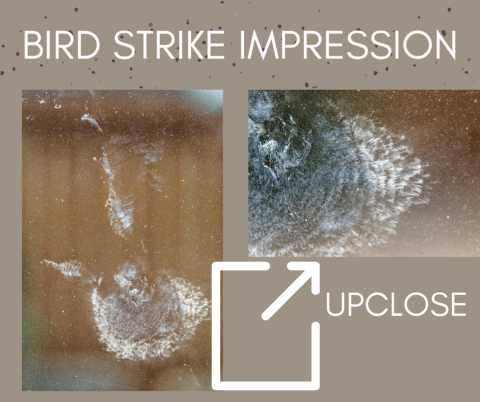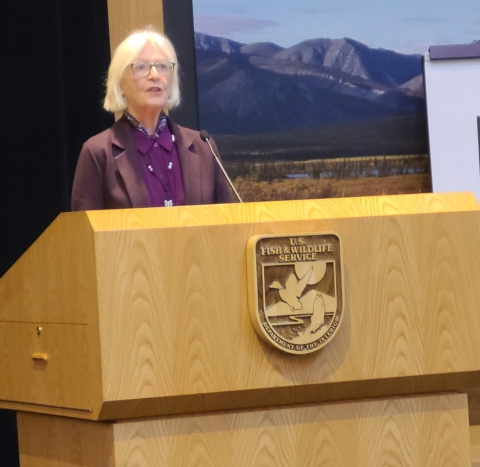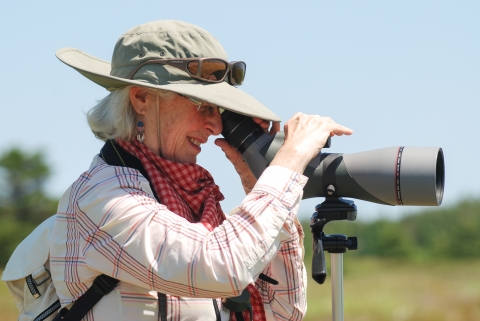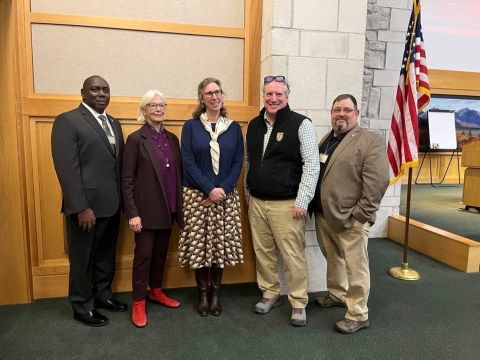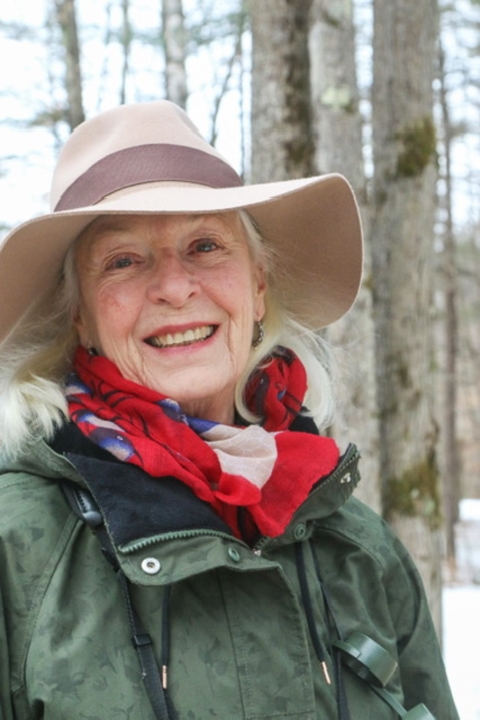Birds have collided with structures, buildings, communication towers, homes and even cars for decades. We can probably all share anecdotes about our own experiences witnessing birds hitting a window or a building, many of those stories ending in the unfortunate death of the bird. But it is only in recent years that the conservation community has learned about the impacts that collisions are having on bird populations at large. So why is this issue suddenly becoming so important and why are we hearing so much about it?
In 2014, a scientific paper was published that reported between 100 million and 1 billion birds are killed every year in the U.S. after colliding with buildings and glass. Every year!
Then in 2019 a scientific paper was published in Science that documented the loss of nearly 3 billion birds since 1970, roughly equivalent to losing one in four adult birds in 50 years. This was a staggering wake-up call for the conservation community. Many populations of common and at-risk species plummeted over those 5 decades and are still declining to this day. The results of the report pulled the bird conservation community together to take immediate and significant actions to reverse these devastating, steep, and quick declines.
At the same time, our planet is experiencing an extinction crisis like no other. Landscape level habitat destruction and degradation, loss of widescale biodiversity, and increased human demands on land and water resources are simultaneously occurring as other stressors like the irreversible impacts from climate change climate change
Climate change includes both global warming driven by human-induced emissions of greenhouse gases and the resulting large-scale shifts in weather patterns. Though there have been previous periods of climatic change, since the mid-20th century humans have had an unprecedented impact on Earth's climate system and caused change on a global scale.
Learn more about climate change continue to exacerbate all of those issues.
Those are extremely complex environmental issues that require long-term partnerships working together across geographical and political boundaries, hemispheric level habitat protection and conservation, the constant need to prioritize the most pressing conservation issues, all while acknowledging that the entire conservation community is pooling our very limited resources together to address these issues.
In comparison, the issue of birds colliding with buildings and glass and other structures CAN be addressed through simple actions. EVERYONE can make changes today that will save birds the very moment they take action.
Did you know that most birds actually migrate at night? It’s true! Hundreds of millions of birds take to the skies during the nighttime to make their migration to their breeding and wintering grounds.
Reducing or eliminating nighttime light pollution can be as easy as flipping a switch.
Reducing bird collisions with buildings and glass can be as easy as making windows visible to birds.
The very moment we begin to take these small actions we begin to make the skies darker across our communities and cities and rural areas, and safer for birds and other wildlife.
These are simple actions that every person can take in their homes, office buildings, schools, parking lots, wherever there are people, that we can all do to save birds.
That’s why the Service hosted the very first Multi-Sector Summit to Address Light Pollution and Bird Collisions. The purpose of the Summit was to catalyze and unite the strengths of organizations, agencies, industries, stakeholders, and outreach specialists to increase collaboration and amplify successful strategies that address this urgent problem.
With such a pressing need to bring so many different perspectives together, it was imperative to identify the most influential people in their field to be a part of this movement. Participants learned from some of the world’s foremost experts on the issues, innovators who are developing solutions, and pioneers that are forging a path for us all to follow.
We also heard from two award winning actresses – Ms. Jane Alexander and Ms. Lili Taylor – who love birds and use their platform to help connect bird conservation with the public.
The plenary speaker, Jane Alexander, is an award-winning actress in theatre, film, and television, an author, a teacher of the arts, and she is also an avid birdwatcher and conservationist.
About Jane
She chaired the National Endowment for the Arts under President Clinton from 1993-97. Her chronicle of those turbulent years, Command Performance: An Actress in the Theatre of Politics, was a New York Times Notable Book in 2000. Jane, a Tony Award winner, was last on Broadway in Grand Horizons. She has performed in hundreds of plays and was inducted into the Theatre Hall of Fame in 1994. Her long film career includes 4 Academy Award nominations, and 2 Emmys for her TV work. Jane was a Trustee of the Wildlife Conservation Society, a board member of the American Bird Conservancy, the American Birding Association, the National Audubon Society, the BirdLife International Advisory Group, and a Commissioner of New York State Parks. She currently sits on the board of the International Conservation Fund of Canada. In 2012 the Indianapolis Prize inaugurated the Jane Alexander Global Wildlife Ambassador Award, and Jane was its first recipient. She has been honored for her conservation work by the Safina Center and the Ripley Waterfowl Conservancy. Her book Wild Things, Wild Places is about her travels with field biologists and conservation stories worldwide.
Jane is a self-taught naturalist with a passion for the natural world and delivered an inspirational keynote speech to a room full of eager listeners. She spoke about her childhood love of birds and the wonder of flight. She spoke of her home in Nova Scotia and her experiences seeing first-hand the changes to the ocean and coasts and what that means to the lobsterman and anglers who depend on the water. She spoke of the 6th great extinction era we are currently in and the constant onslaught of issues that our entire planet is facing due to human consumption and human expansion. And she spoke of the tragic event that occurred on the night of October 4, 2023, when hundreds of birds were killed after colliding with the McCormick Place in Chicago. That was a pivotal moment in that the event reached millions of Americans who hadn’t heard of this issue of bird collisions before, and it catapulted the conservation community to take action.
Jane spoke with conviction and passion about the need to protect birds, and take action to prevent these types of tragedies from happening again. We asked Jane about her interest in preventing bird collisions and what we can do to move forward.
Why are birds so special to you?
Birds were my favorites from a very early age. My mother taught me their names as I learned their habits and their plumage. And best of all, they could fly! I became obsessed with flying, and my father made me some balsa wood wings and helped me as I raced down paths to get lift off, which never happened, of course. But that didn't matter; it was just wonderful being with him on the quest.
As an adult, I am enthralled by the extraordinary migratory journeys birds undertake, by their habits and rhythms through the year, and by the parental care that so many provide for their young. I am a Piping Plover guardian in Nova Scotia during the summer, and I’m amazed every year to watch these tough-as-nails little birds return from wintering in the Bahamas or somewhere like that and try to raise their chicks against all odds. I love to hear the Hermit Thrushes singing in my woods, and to watch the bright Tree Swallows swooping in and out of nest boxes all summer long. They teach us so much about beauty and resilience.
Why are these issues of keeping the night skies dark and stopping bird collisions so important to you?
You cited some of the statistics about bird deaths earlier in this article. This is simply not sustainable any way you look at it. We have lost almost one-third of North America’s birds in the last 50 years, which is absolutely devastating. Collisions and light pollution are clearly a big contributor to that.
Now, as discouraging as this is, it is not insurmountable, and people need to know that. These are obstacles we created and that we can overcome. I remember when Rachel Carson's Silent Spring was published in 1962, calling out the terrible dangers of DDT. It was also a call to arms, and everyday Americans, scientists, nonprofit leaders, and elected leaders all rallied around to reverse course and save our birds then. We can do that again!
I also believe that a starless sky is as bad for us as it is for the birds who navigate by it. We can hardly see the stars anymore. Light pollution in the heavens obstructs anything that might be seen, such as stars, planets, comets, or birds. When we have no relationship to the heavens, to the galaxies, we are confirming our own narcissism daily. Our own loneliness in the cosmos. We look down, not up, and we must keep looking up.
Why was it so important to be at the Summit and address the group before you?
I really commend the U.S. Fish and Wildlife Service for convening the Summit with so many key players to tackle these vital concerns. That’s the kind of leadership we need. Of course, I was honored and pleased to address the Summit because in that room were all of the people who are able to make a difference: industry leaders, scientists, advocates, and public servants. This is going to take all of us, and I was so glad to see everyone coming together with a common cause.
I do look to the U.S. Fish and Wildlife Service, and all the inaugural Summit participants, for continued leadership on these issues, and I plan to stay engaged however I can!
What actions do you want people to take? (Including agencies, conservation organizations, the public, etc.)
Well, the experts in the field know their stuff, but some of the things I hope we can do include an awareness blitz in print, digital and social media to help lighting manufacturers, architects, builders, realtors, security companies, mayors, and really everybody who plays a role in the solutions. And the politicians need to propose solutions regarding lights, windows, and buildings, especially during migration
We need to find ways to talk with everyone, because this is everyone's problem—make information and solutions available to everyone who has a window!
I think the conservation organizations and advocates, and leaders like clergy, teachers, social and medical practitioners all have important roles to play in helping the public understand the importance of and imagine new solutions to protect our skies and our birds.
We can each bear witness and be kind, and we can make positive changes. That is our role. As I said at the Summit, let us pledge together to give birds the peace to navigate the earth, by reducing harmful lights and glass, by spreading the message far and wide, by creating laws and regulations, and by letting the stars shine!
What is your vision for continuing to champion this issue? How do you see your role evolving?
I will talk about this issue to everyone who will listen! I’ve been a conservationist for a long time, and I’ve seen the highs and the lows. We’re in an era of great peril for the biodiversity of our Earth—and biodiversity is what makes our own life possible. I’m going to use all my strength and the voice that I have to inspire people to work together and make a difference. If you have ideas, give me a call!
Both a captivating storyteller and a birder, we couldn't wait to ask Jane about her love of birds and how she cultivates her passion for protecting birds alongside others. We invite you to listen to an episode from our National Conservation Center's Thoughts From Home podcast series, as Brian Smith, U.S. Fish and Wildlife Administrator/Assistant Regional Director, talks with her about her passion for birds.
Bird Collisions: Building and Glass
Bird Collisions: Nighttime Lighting
Bird Collision Reduction Toolkits
The Multi-Sector Summit to Address Light Pollution and Bird Collisions

